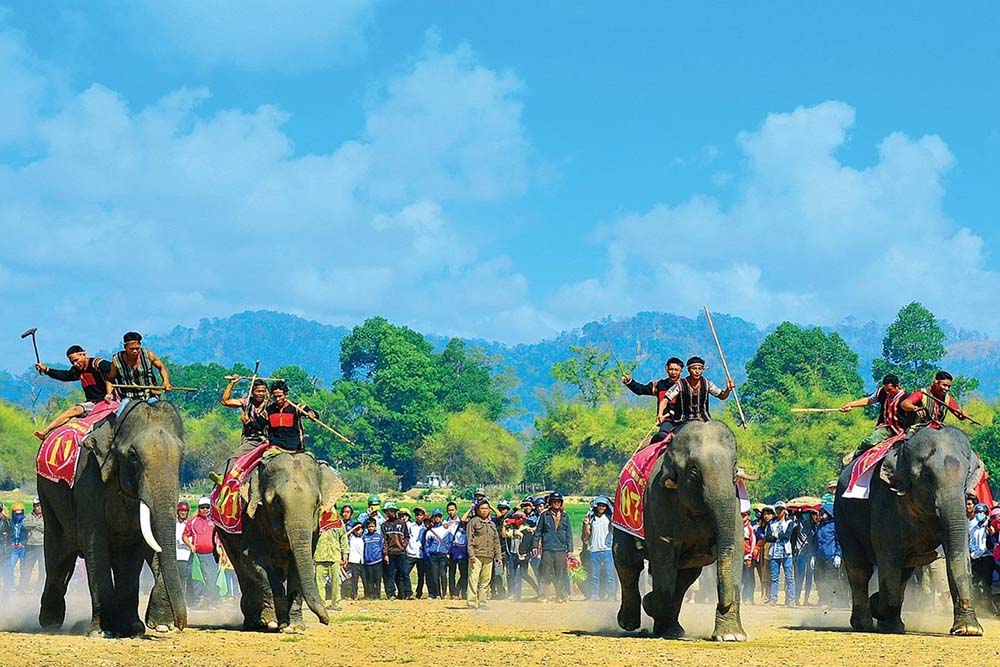
1. The story of the birth of the Buon Don Elephant Racing Festival
Coming to Ban Me city, you not only have the opportunity to enjoy many delicious dishes such as Banh Duc Ba Bot Buon Ma Thuot, chicken noodle soup, Ba Huong noodles, crab vermicelli, red vermicelli... but you can also Participate in experiencing many interesting cultural festivals, including the famous Buon Don Elephant Racing Festival.
For many generations, the M'nong (Bunong) people in Buon Don have known how to hunt and tame wild elephants. This animal not only helps people pull and carry goods but is also considered a "great asset" in the family, holding an important position in cultural and spiritual life.
 Buon Don Elephant Racing Festival is one of the Central Highlands mountain and forest festivals imbued with the beauty of the long-standing cultural traditions of the M'nong people living in Buon Don district.
Buon Don Elephant Racing Festival is one of the Central Highlands mountain and forest festivals imbued with the beauty of the long-standing cultural traditions of the M'nong people living in Buon Don district.
According to historical documents at the Dak Lak Provincial Museum of Ethnology, Mr. Y Thu K' Nul (also known as Khu Sa Nup, born in 1827, died in 1938) was one of the first M'nong people to build the hunting and taming wild elephants into domestic elephants. During his life, he captured nearly 500 wild elephants and tamed them, so people honored him as the "King of Elephant Hunters".
Originating from Y Thu K' Nul, hunting and taming elephants gradually became a tradition in Buon Don. This place gradually became considered the capital of elephants. Buon Don Elephant Racing Festival was born from there and became a famous festival. The elephant race not only demonstrates the martial spirit of the people here but also speaks of the strong lifestyle and long-standing traditions of the Central Highlands village.
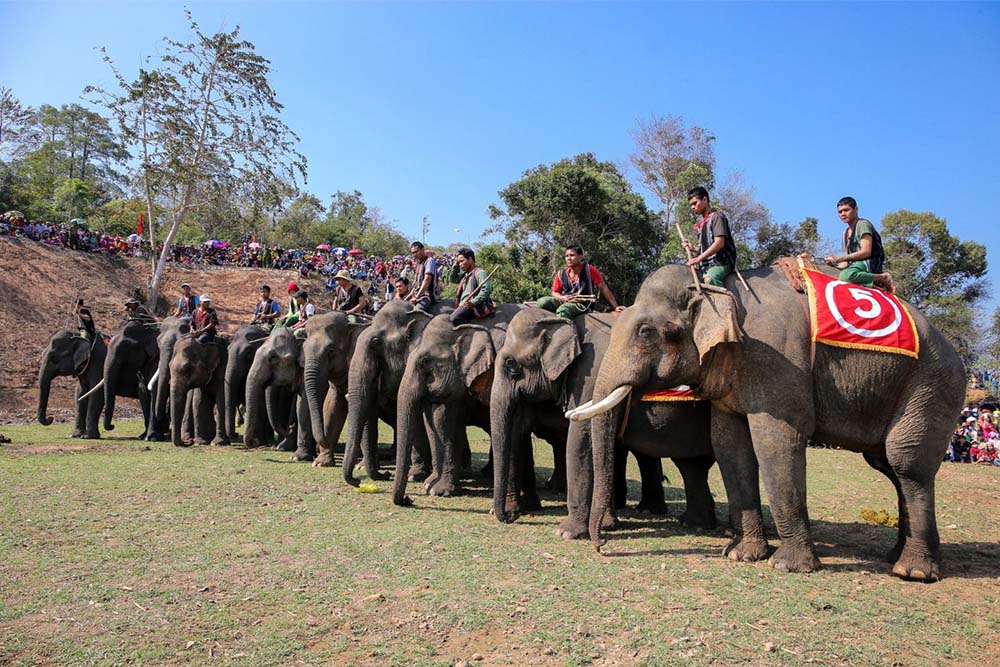
2. Time and location of the festival
Buon Don Elephant Racing Festival usually takes place every two years in the third lunar month, along with the season of many unique festivals in the Central Highlands such as Buon Ma Thuot Coffee Festival, Po Thi Festival (no code).. This is both the time before the new crop season and the time when the forest land is dry, hundreds of flowers are blooming, and the weather is clear and sunny, extremely suitable for festivals.
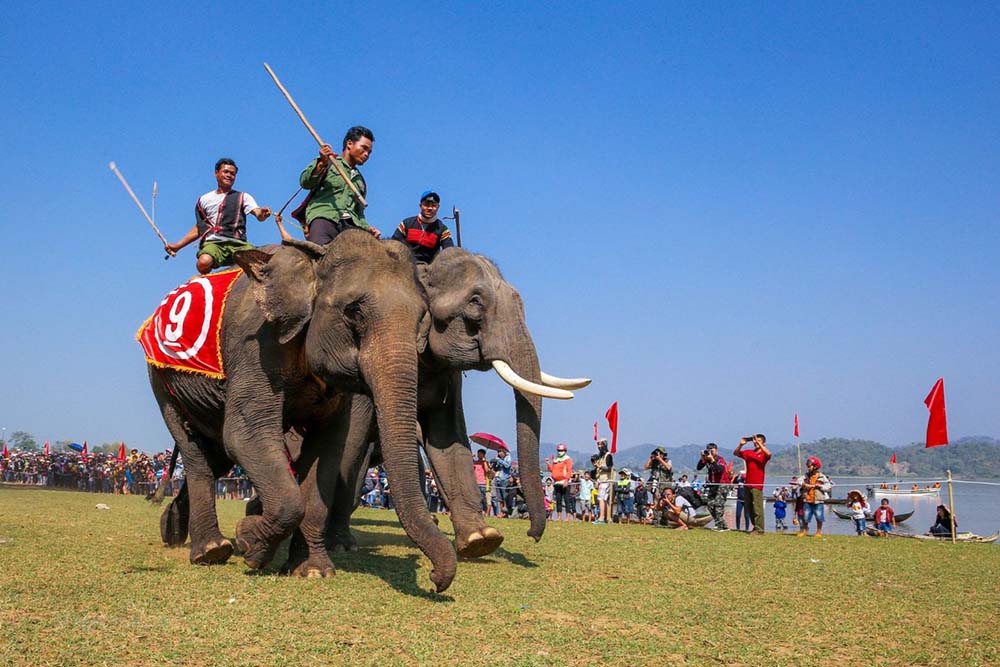
Because the elephant race takes place on a very large scale, the festival's venue is mainly in an open area of land 400 to 500 m long, flat, with few trees, enough for 5 to 10 large elephants. Stand in a horizontal line to participate. The chosen place is usually locations such as Yok Don National Park in Buon Don and Ea Sup districts or a thin forest along the Serepok River located in the Mekong River tributary.
3. What's special about the festival?
- Before the festival
A few months before the third lunar month - the Central Highlands festival season, the M'nong people will choose elephants that are large, healthy, resilient and intelligent. Because each Buon Don Elephant Racing Festival season only has about 10 or so elephants participating in the competition, trainers need a lot of time to prepare their friends to meet all the criteria to enter the next round.
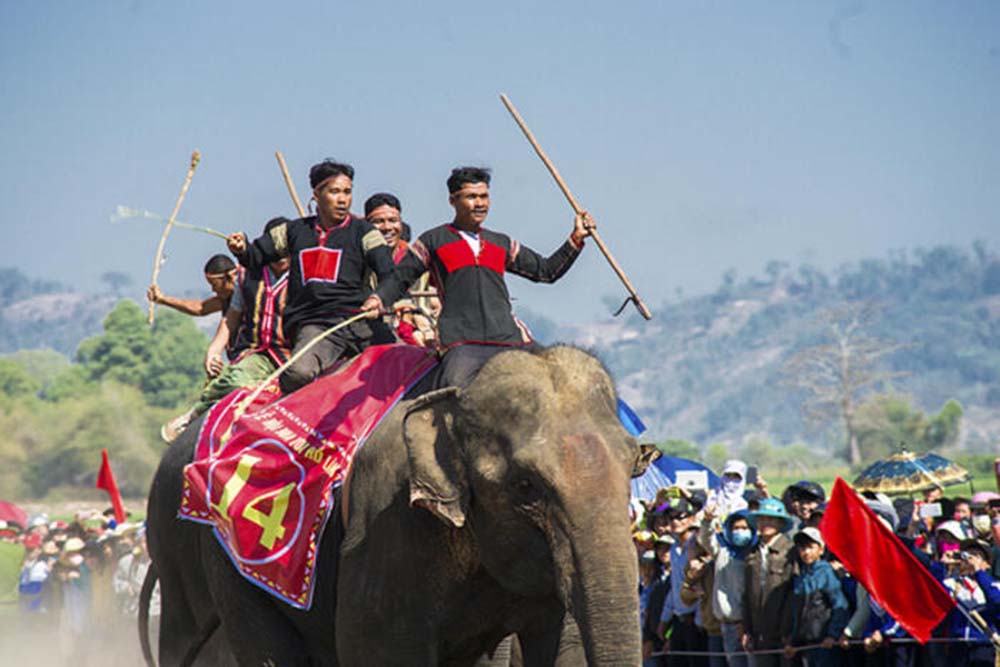
After completing the selection and preparation steps, they take their elephants into the big forest to find food, and at the same time "nourish" the elephants with sugarcane, bananas, papaya... Near the competition day, the elephants will be able to rest. , take a bath and do some taming exercises to participate in festival activities.
Activities in the Buon Don Elephant Racing Festival include water worshiping ceremony, elephant health worshiping ceremony, buffalo eating ceremony to celebrate the season (Buffalo Stabbing Ceremony), cultural festival of ethnic groups in Buon Don district, interspersed with other parts. competitions like elephant soccer, elephant running, and swimming. Next is the season celebration and elephant bathing ceremony, these are the last two rituals in the elephant activities at the festival.
- Date of Buon Don Elephant Racing Festival
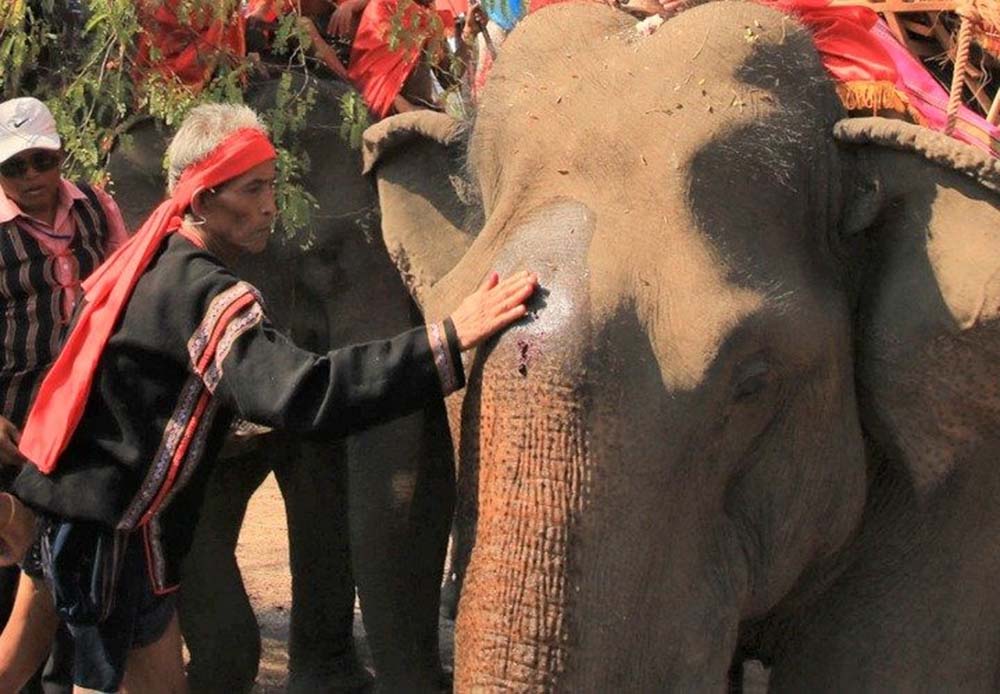 Before entering the competition, the village elders will perform a ceremony to worship the elephant's health with rituals such as placing rice on the elephant's head, pouring wine and blood to pray for blessings and good health.
Before entering the competition, the village elders will perform a ceremony to worship the elephant's health with rituals such as placing rice on the elephant's head, pouring wine and blood to pray for blessings and good health.
On the day of the competition, the village elder will first perform a health offering ceremony for the elephant with 3 cups of wine, a pig and a gourd of water. Elephants will have rice placed on their heads and sprinkled with wine and blood to pray for good fortune and health. After completing the ritual, everyone in the festival will sing and dance together under the bustling music of gongs and then officially start the Buon Don Elephant Racing Festival.
Entering the race, on the back of each elephant are two mahouts, wearing traditional national costumes. They are responsible for controlling the elephant to follow the elephant keeper's orders. Elephants will be ordered to line up and kneel before the starting line to prepare for competition. After the command, a horn sounds, the driver will push the elephant forward and accelerate quickly to reach the finish line early. The sound of elephants running loudly mixed with the cheers and cheers of the audience created a bustling and joyful atmosphere for the whole area.
Besides demonstrating endurance on straight roads, elephants also have to move flexibly on steep, zigzag roads and swim across large rivers. Elephant handlers must be very skilled in taming and guiding elephants to race to the finish line.
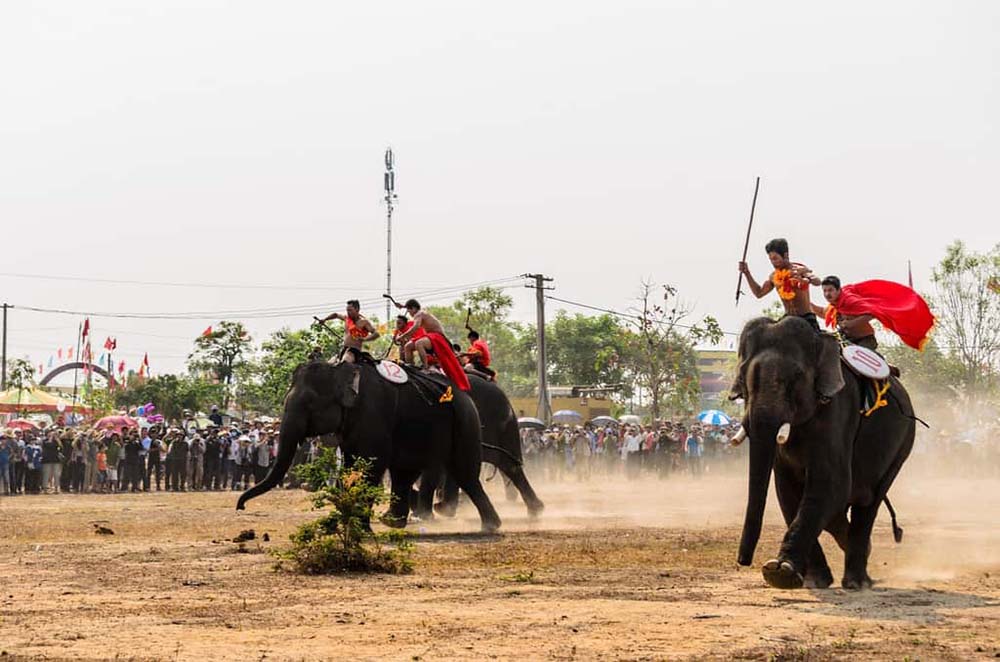 The skillful and skillful combination between the mahout (the person sitting in front) and the driver (the person sitting in the back) plays an important role in leading the elephant to the finish line.
The skillful and skillful combination between the mahout (the person sitting in front) and the driver (the person sitting in the back) plays an important role in leading the elephant to the finish line.
To let the elephant run to the right, the mahout sitting in front will tap the elephant's right ear and vice versa. While the person sitting behind is responsible for urging the elephant to speed up by using a wooden hammer to hit the elephant's butt. Both must coordinate well and smoothly with each other so that the elephant can understand the intentions of the drivers, thereby running quickly and in the right direction.
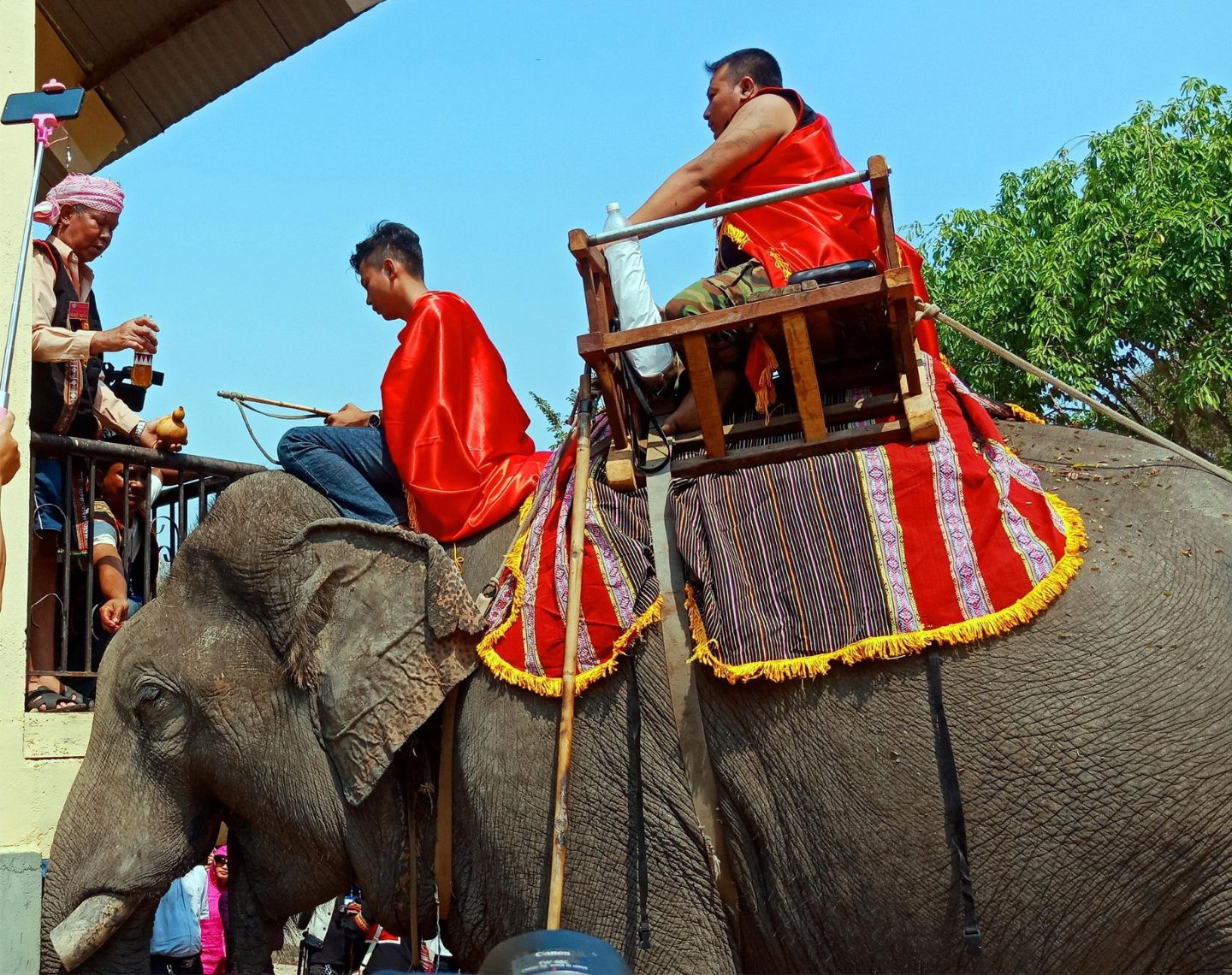
The reward for the elephants after the competition is bunches of sweet sugar cane and bunches of ripe yellow bananas. The supple and healthy elephant that wins the championship will be awarded a laurel wreath along with the mahout. In addition, the elephant is also rewarded with many delicious dishes.
